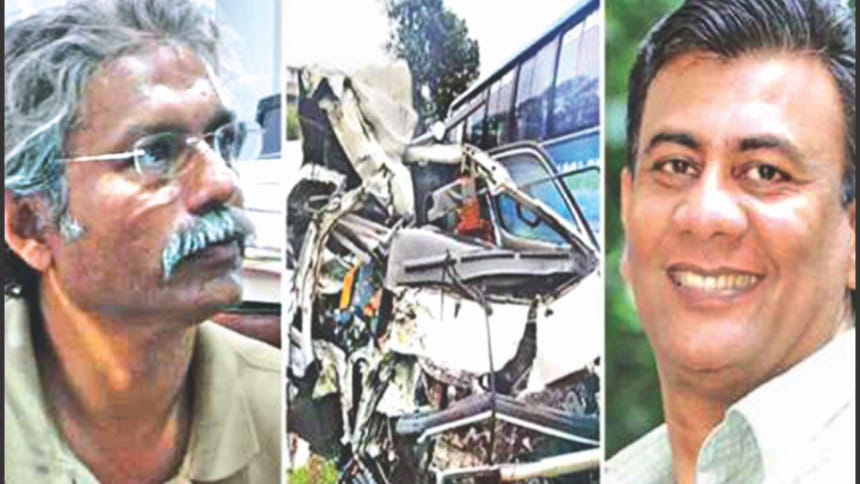ASSESSING TORT CLAIMS: Relevance of Catherine Masud case

Underdeveloped tort law has been a growing concern for the legal system of Bangladesh for many years. Except for a very few principles, the area has remained hugely unguided. On 03 December 2017, a judgment was delivered by a Division Bench of the High Court Division comprising their Lordships Ms Justice Zinat Ara and Mr Justice Kazi Md Ejarul Haque Akondo, whereby an amount of taka 4,61,75,452/- was awarded in favour of Ms Catherine Masud and two others who had been a victim of a road traffic accident in which five people died instantly including famous film director Tareque Masud and renowned photo journalist Mishuk Munir. Even though the claim was basically brought under the Motor Vehicles Ordinance 1983, the Court applied and developed tort law principles in this case which would undoubtedly be extremely helpful for reference in other tort cases. One of the major issues in the case has been the assessment of compensation in tortuous claims.
Undeniably, determination of compensation is difficult in most tort claims due to the nature of injury sustained. Another difficulty is that it requires performing the anticipatory tasks for calculating damages respecting losses that lie in future. On top of that it is very difficult to prove these damages by adducing concrete evidence; even in accordance with the civil standard. Consequently we are in need of development of a “legal test” that we can apply while determining the quantum of compensation. The said judgment applied two cases of our jurisdiction reported in 22 DLR (SC)(1970) 51 and 69 DLR (AD) 196 while giving us a “legal test” for future reference. Assessment of damages must necessarily be to some extent of a rough and approximate nature based more or less on guess work, for it may be impossible to accurately determine the loss which has been sustained by the death of a husband, wife, parent or child, the judgment observes. There must be evidence of “reasonable expectation of pecuniary advantage”, and not of a “mere speculative possibility”.
Our Appellate Division in 69 DLR (AD) 196 confirms that damages for pain, agony, suffering and loss of expectation of life are tortuous. These emotional sufferings are incalculable and if the Court is satisfied that the plaintiff is entitled to any compensation that can only be awarded in lump sum. There is no subjective standard to follow in awarding compensation and it is the Court which has to decide on the amount in question. The standard for estimating the amount of damages in case of actionable negligence resulting in death must not be a subjective standard but an objective one and regard is to be had to the earnings of the deceased at the time of his death, his future prospects, his life expectancy etc.
In Catherine Masud case, the High Court Division awarded compensation considering the particular Claimants in question who proved to be dependent on the deceased. In calculating the deceased's professional prospect, the Division thoughtfully considered the income tax returns of the deceased victim. While calculating the damages, the retirement age of the deceased victim was also considered. This is how an amount can be reached at by subtracting the retirement age from the age on which the victim died due to the defendant's negligence and then by converting the same into months and by multiplying that figure with the monthly income of the deceased victim as per his income tax return.
While quantifying the compensation on account of loss of love and affection, the Court laid down the basic criteria to be the relationship between the victim and the claimants. In determining the relationship the closeness and proximity of and/or blood relations can be looked into along with any evidence of continuous and visible manifestation of love and affection between and among them.
In respect of loss of future advancement, the remoteness test would have to be satisfied bearing in mind that the same sometimes overlaps with the dependency head. Respecting medical expenses, medical reports and certificates are valuable considerations and the assessment would have to be based on those documentary evidence along with the oral evidence in case experts are being called for. The High Court Division, amongst others, recognises funeral expenses of the victim and damage to property as being awardable heads.
Everyday numerous incidents happen which encompass gross negligence on part of the people concerned. However, the corpus of tort law cases is still not an ever-expanding one; rather people feel a lack of motivation when it comes to suing someone and making a tort claim. The judgment of the High Court Division in the Catherine Masud case is a praiseworthy judgment for tort law enthusiasts. It lays down valuable guidelines for future tort law cases respecting the assessment of damages, which is a very complex area in the practical field. Moreover it shows us the heads/accounts on which compensation may be sought for. While applying the guidelines of the Apex Court, the judgment guides us as to the test to be applied in tortuous claims which the lawyers in practice can very well use as reference in their cases.
The writer is an Advocate, Supreme Court of Bangladesh.

 For all latest news, follow The Daily Star's Google News channel.
For all latest news, follow The Daily Star's Google News channel. 



Comments